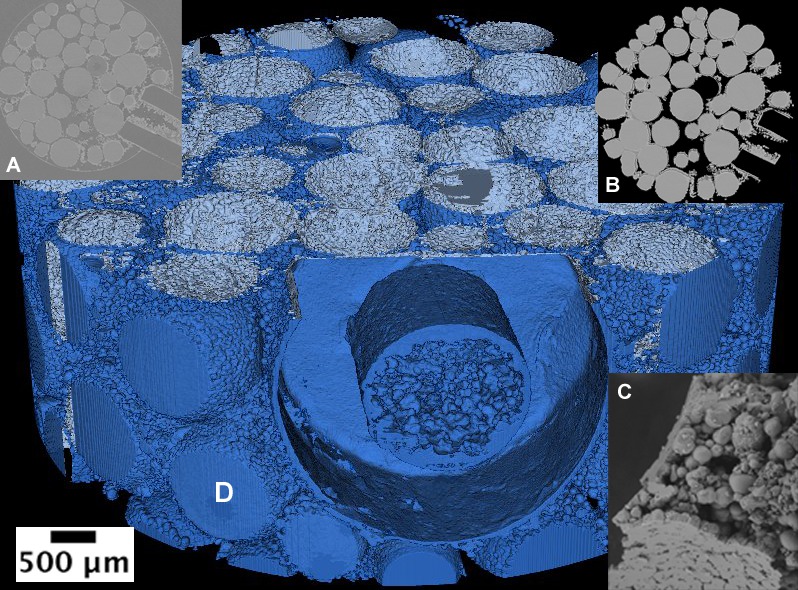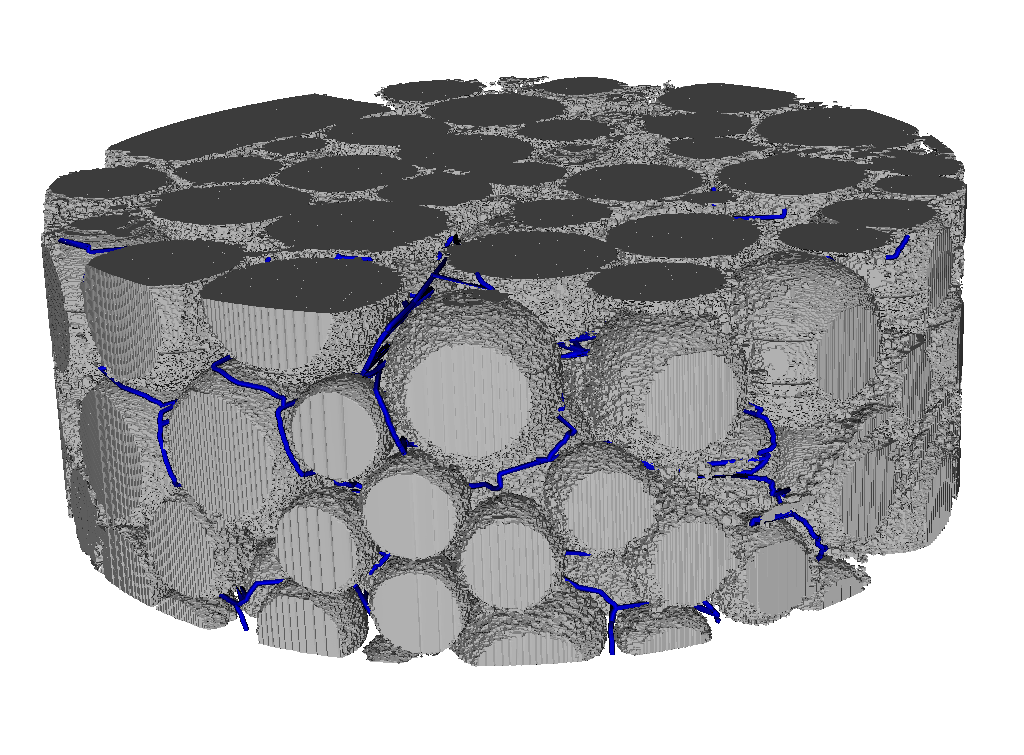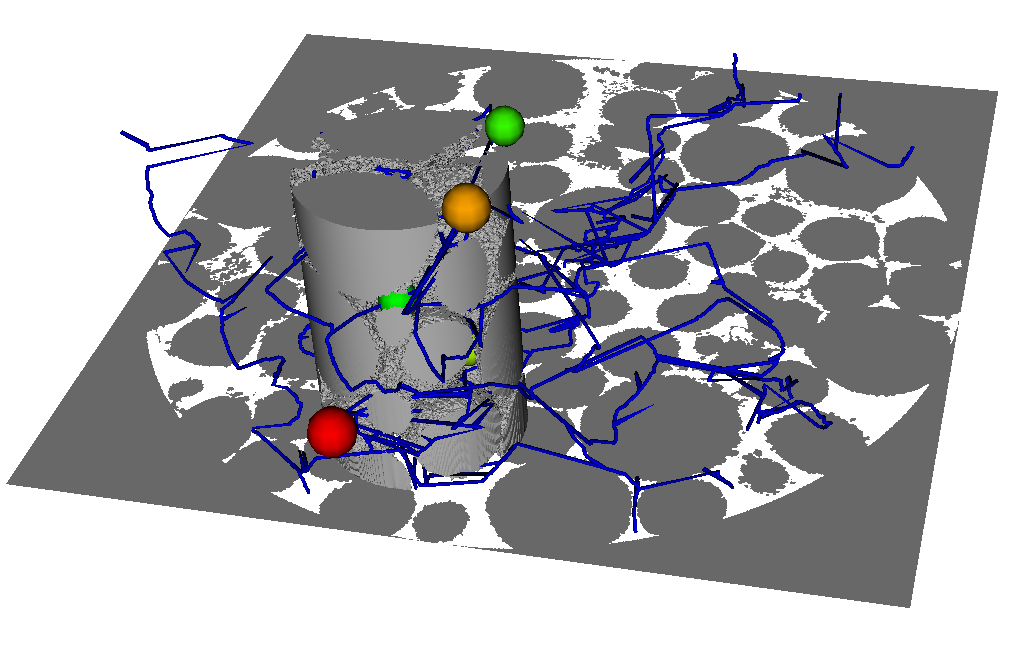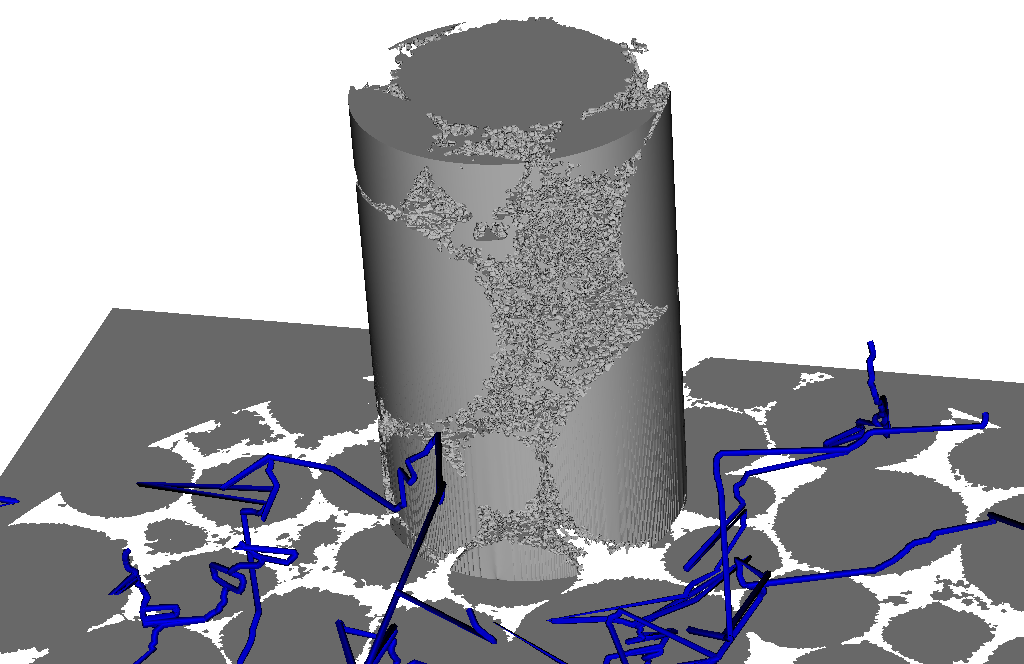This is an archival copy of the Visualization Group's web page 1998 to 2017. For current information, please vist our group's new web page.
CO2 Sequestion and Storage: From Raw Micro-CT to Quality Measurements
Problem Statement and Goals
Since 1751, nearly 337 billion tons of CO2 were emitted into the atmosphere as the result of combustion of fossil fuels and cement production. If CO2 is disruptive to the earth's climate, then reduction in atmospheric CO2 is necessary to preclude an environmental catastrophe. One approach in controlling the CO2 concentration in the atmosphere is to store it in deep subsurface rock formations using a safe and effective technology.
LBNL researchers are developing new experiments and simulations to increase the understading of processes in fluid-rock systems, which relate to the geologic sequestration of CO2. For example, they have designed materials and collected subsurface samples of porous materials, which are exposed to high energy X-rays using synchrotron radiation, while a detector captures information that can be reconstructed as image slices. These images contain important information about the sample's internal structure that is fundamental in evaluating fluid dynamics given particular geometries.
Implementation and Results
We have developed tools to recover material structures from micro-tomography images. These tools perform an essential pre-processing step for subsequent analysis, such as the extraction of pore networks from porous materials, porosity and permeability estimation,and quantification of CO2 during flow. The image analysis workflow developed by Ushizima et al., 2011 [1] automates segmentation, and is deployed as part of the ImageJ plugin known as Quant-CT, a new threaded, shared-memory parallel package that combines 3D nonlinear smoothing with the 3D region merging for material segmentation. This plugin leverages standard algorithms such as the bilateral filtering and the statistical region merging (SRM), and adapts them to deal with artifacts found in micro-CT images. Substantial contributions arise from including a new scheme to estimate the photometric parameters of the bilateral filtering using the coefficient of variance, extracted from subimages (patches). Another advance, in collaboration with Prof. Bianchi, was the algorithm that controls the coarseness of the segmentation and over-segmentation, called material assignment based on similarity histograms (MASH); even in cases of sharp brightness variations across the image slices, MASH tackles over-segmentation that cannot be handled by SRM alone (Ushizima et al., 2012-1 [3])
After splitting the micro-CT image stacks into volumes corresponding to dense material and empty spaces, feature extraction takes place in order to determine properties of the porous material. Morozov and Weber implemented a set of algorithms using topological analysis to quantify maximum flow through porous networks (Ushizma et al., 2012-2 [2]) (see Figure 2). They introduce a new approach to characterize porous materials using the extraction of Reeb graphs to represent the structure of the interstitial volume. In addition, they calculate flow graphs which approximate the network branch capacity for carrying flow. Sophisticated visualization tools emphasize the most prominent pore bodies of a porous material, which corresponds to the loci where liquid can accumulate.
Impact
The developed tools and algorithms help domain scientists quantify material properties that are required for developing technologies to store CO2 safely in deep surface rock formations. Currently, the analysis and feature extraction pipeline enables: (a) the detection of a solid phase from micro-CT and quantification of porous material porosity automatically; (b) an efficient extraction of pockets and pore networks through Reeb graphs computation; (c) the comparisons between different materials, and between experimental results and simulation outputs; (d) the increase of the image throughput and the decrease of the delay between data collection and characterization.

|
| Figure 3. Visualization of fluid flow simulation of a glass bead pack. |
References
[1] Daniela Ushizima, Andrea Bianchi, Christina de Bianchi, and E. Wes Bethel. Material Science Image Analysis Using Quant-CT in ImageJ. In ImageJ User and Developer Conference 2012, Mondorf-les-Bains,Luxembourg, October 2012.
[2] Daniela Ushizima, Dmitriy Morozov, Gunther Weber, Andrea Bianchi, James Sethian, and E. Wes Bethel. Augmented Topological Descriptors of Pore Networks for Material Science. In Transactions on Visualization and Computer Graphics (to appear), IEEE VisWeek 2012, Seattle, WA, Oct 2012.
[3] Daniela Ushizima, Dilworth Parkinson, Peter Nico, Jonathan Ajo-Franklin, Alastair Macdowell, Benjamin Kocar, Wes Bethel, and James Sethian. Statistical Segmentation and Porsity Quantication of 3D X-ray Micro-Tomography. In Applications of Digital Image Processing, Proc. of SPIE, volume 8135, pages 1{14, San Diego, CA, Aug 2011.
Contact
Wes Bethel, Andrea Bianchi, Dmitriy Morozov, Daniela Ushizima, Gunther Weber



